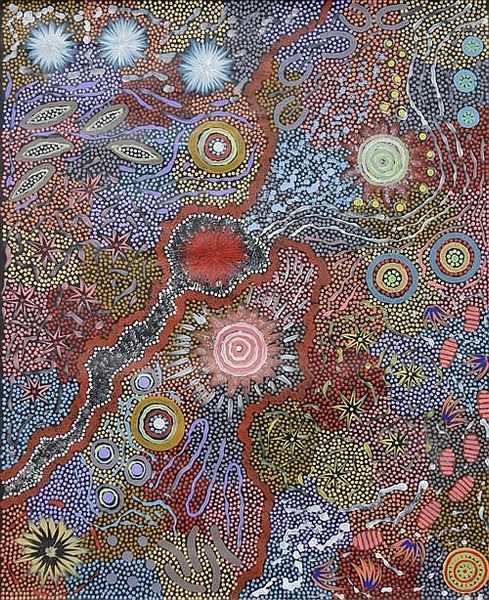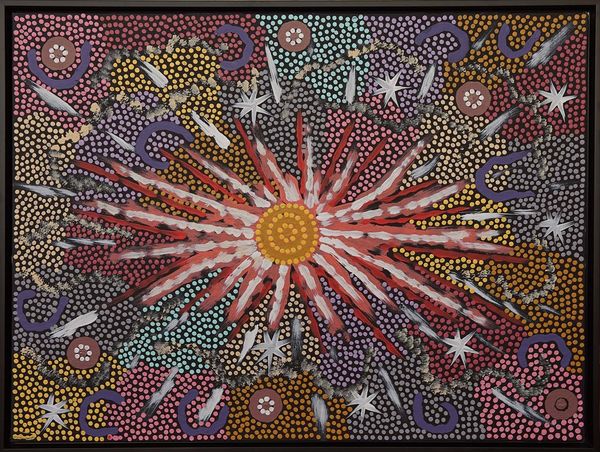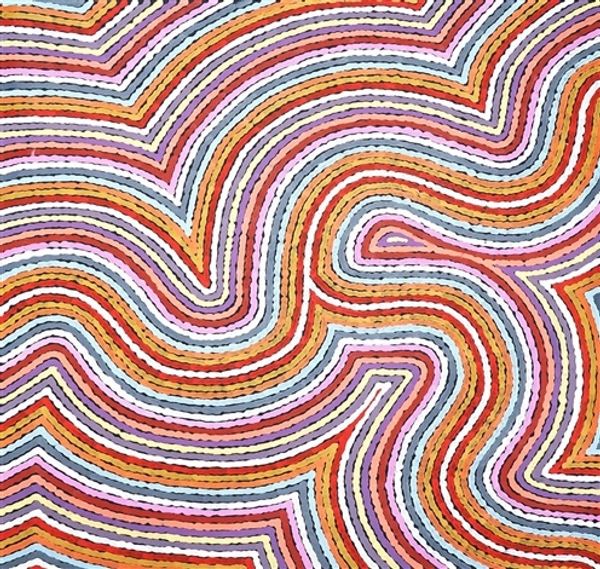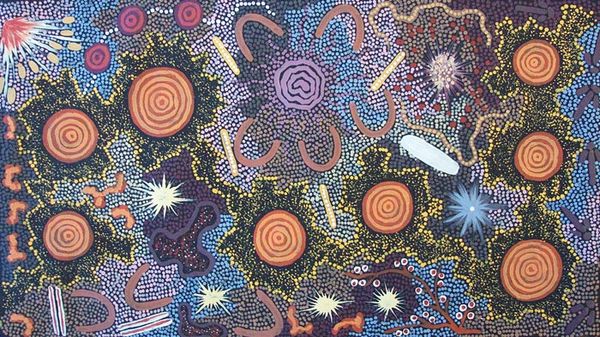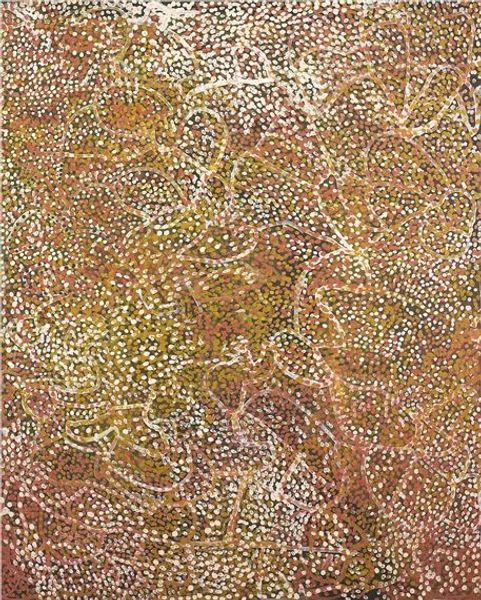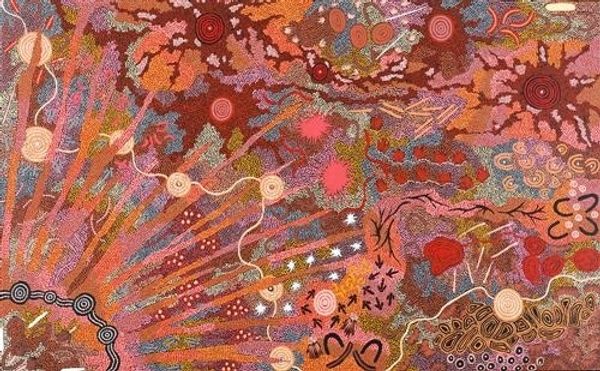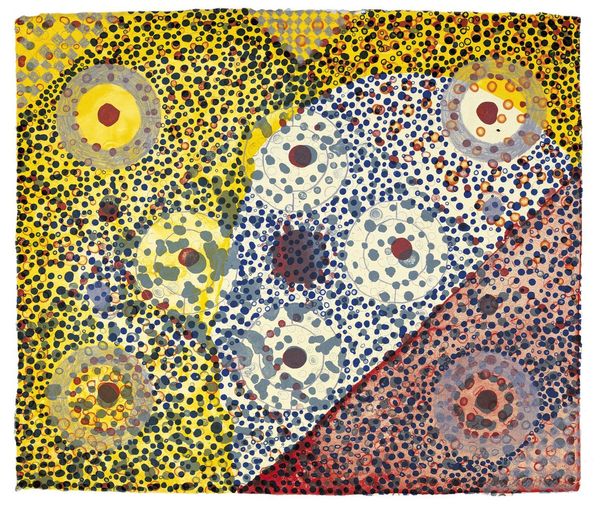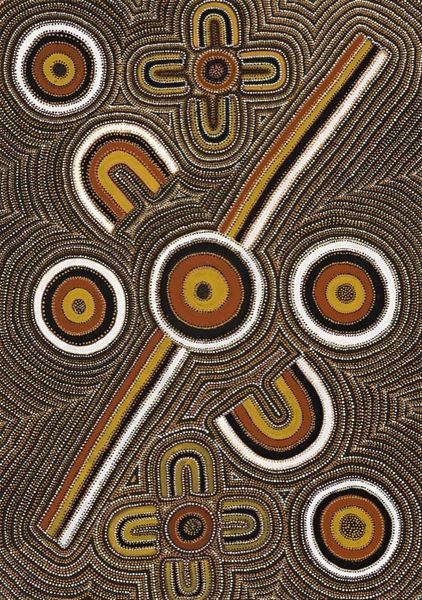
painting, acrylic-paint
#
naturalistic pattern
#
organic
#
painting
#
pattern
#
landscape
#
acrylic-paint
#
geometric pattern
#
abstract pattern
#
organic pattern
#
flower pattern
#
intricate pattern
#
pattern repetition
#
layered pattern
#
pattern in nature
Copyright: Michelle Possum Nungurrayi,Fair Use
Curator: Looking at Michelle Possum Nungurrayi's painting, "Grandmother's Country," the immediate effect is of an almost overwhelming visual density. Editor: It's mesmerizing, isn't it? Like peering into another dimension, full of hidden structures. The abundance of dot work makes you think of the labour and commitment involved. Curator: Absolutely. These seemingly endless dots of acrylic paint are more than just a technique; they're integral to understanding contemporary Indigenous art's cultural and political function. Each mark, each colour choice contributes to a broader narrative of place and belonging. Editor: I see what you mean. Knowing it's titled "Grandmother's Country" reinforces the idea of deeply layered connection to place. And the repetitive dotting suggests the ongoing labour inherent in maintaining cultural memory. The use of acrylic paint, a relatively recent material, juxtaposed with ancient traditions… it's fascinating. How has this material shift changed things? Curator: The adoption of acrylics allowed Indigenous artists to gain wider recognition in the international art market, though sometimes at the expense of cultural specificity being overlooked by the western world. Editor: You’re right, we need to be mindful of the role we, as outsiders, have in interpreting it. Still, I can't help but admire the vibrant colour choices, the way the artist contrasts seemingly chaotic fields of colour and dots with almost diagrammatic, ordered shapes. Curator: Yes, while at first glance it might appear chaotic, there's actually a carefully considered structure, and you're right the materials allow this vividness. Indigenous Australian art has, for a long time, negotiated the demands of cultural preservation and adaptation to the modern art world. Editor: "Grandmother's Country," then, is not only visually stunning but carries significant weight. We begin to see it not merely as painting, but an intersection of labour, land, and legacy. Curator: Exactly. Considering "Grandmother's Country" through a wider scope we see the dynamic processes through which imagery operates in modern cultural politics.
Comments
No comments
Be the first to comment and join the conversation on the ultimate creative platform.

